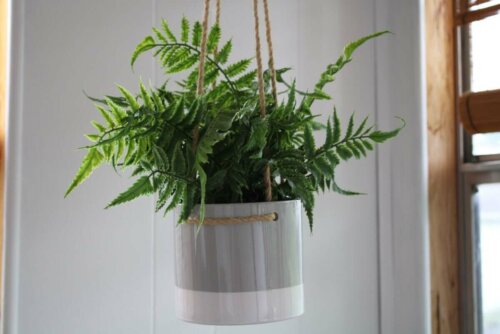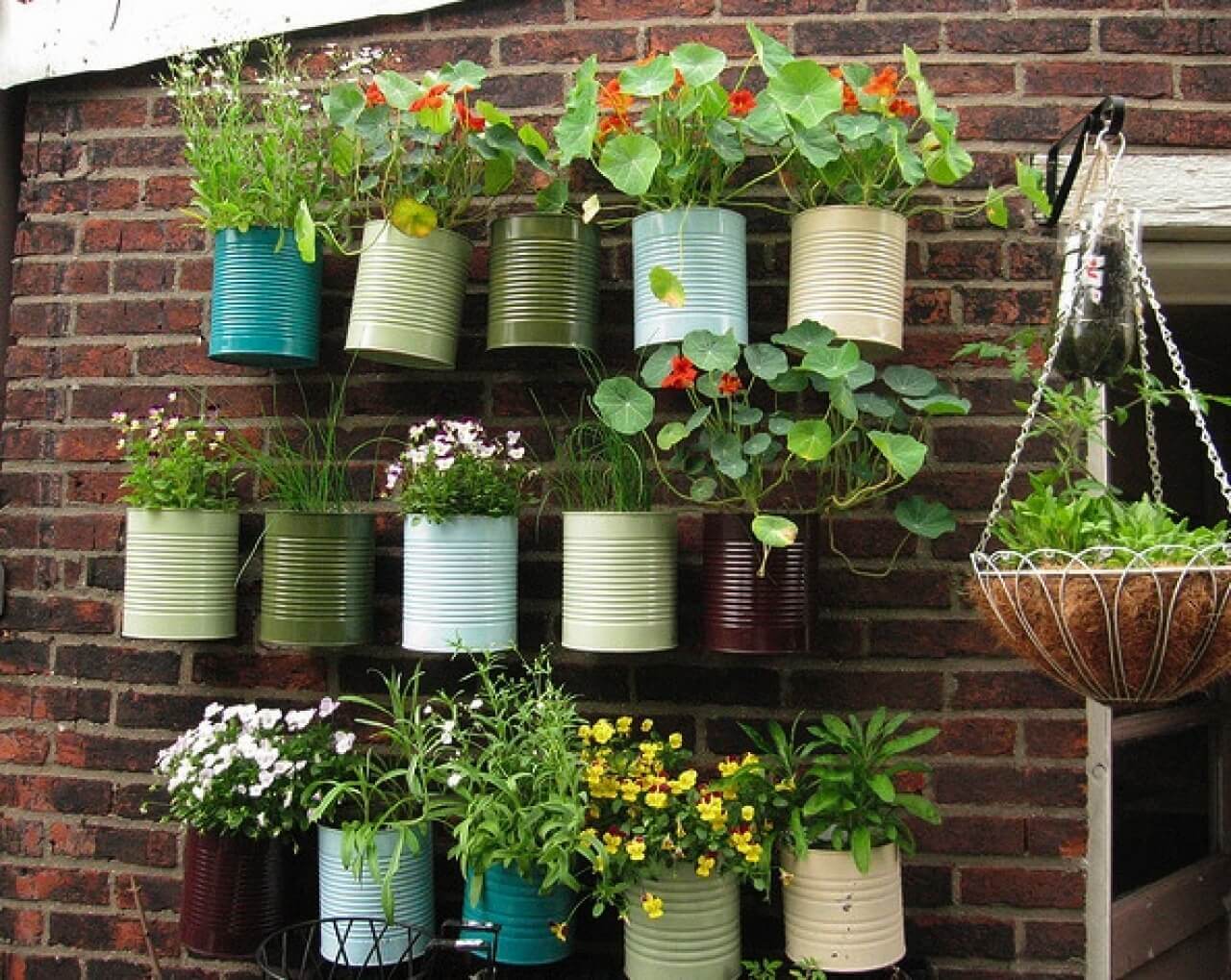How to Make Homemade Hanging Planters for Your Plants

You should definitely buy some plants for your home, as they bring spaces to life and add color. However, it’s equally important to have a place to put them so that they look good. How about making homemade hanging planters?
You won’t need many materials or experience to make your own. In fact, you can even make them with recyclables!
One of the most outstanding aspects of these creations is that they’re inexpensive to make. With a few materials, you’ll be able to make your own hanging planters for any area of your home, whether indoors or outdoors.
How to make your own homemade hanging planters

Making your own homemade hanging planters is the perfect opportunity to let your imagination run wild. Find items that you can recycle and get to work!
The materials you’ll need
- Recycled containers, such as glass jars, yogurt cups, plastic containers, etc.
- Rope or twine made of cotton, nylon, or hemp
- Plants
- Sand for the drainage system of the plants
- Potting soil
- Scissors
- 1 hook
Instructions
- Take the twine or string and cut it into eight ropes of the same length. You should make them between 23 to 33 inches long. It all depends on the size of the pot.
- Tie all the ends of the ropes, until you have a big knot in one of the bases.
- Lay the ropes out on a flat surface and divide the eight you just cut into four pairs.
- Knot each pair three inches from the base.
- Take the two ends (right and left) and tie them together to complete the circle.
- Continue knotting two to four inches above your first row of knots. Remember that the distance will depend on the width of the pot.
- Continue with the procedure. Knot two ropes of alternating rows so that your second row of knots consists of the opposite pair of ropes.
- Don’t forget to take the two leftover ends and knot them after each row to complete the circle.
- Test the size of your homemade hanging planter. To do this, place the pot you chose on it.
- You can add more knots if you like.
- Now is the time to start planting! To do this, add a layer of sand to the bottom of the pot and then add a layer of potting soil.
- Place the plant you selected inside and finish filling with soil.
- Place the pot with the plant inside the planter you just made. Gently pull vertically.
- Tie a final knot at the other end of the planter.
- Install a hook so you can hang it wherever you want.
You should also read: Seven Dangerous Plants You Shouldn’t Have at Home
6 hanging planters you can make with recycled materials
Once you dare to try this arts and crafts out, you’ll see how easy it is! In fact, you can even experiment with all kinds of materials. For example, this is the perfect opportunity to recycle clothes, fabrics, or items that you no longer use.
We’ll now show you a list of some ideas for planters with recycled materials that you could make at home. Simply select the idea you like the most or that suits your style!

1. Hanging planters with old shirts
This is one of the easiest ways to make your own hanging planter since you’ll use materials that you already have at home. All you have to do is pick a shirt you no longer wear and cut it into several strips.
Begin to make knots with the strips, just as we explained above. Consider mixing and matching strips of different colors to achieve a much more original design.
2. Hanging planters made with wood and rope
If you have a wooden log at home, you can use it to make a hanging planter. The idea here is to use the log as a base and support it with a series of ropes so that you can hang it.
Make small holes in the wooden log and insert the ropes into each one. After that, tie a knot at the bottom. Hang your planter and place the plant of your choice on top, with its respective pot.
3. Hanging planters with embroidery hoops
Another object that you may have at home is an embroidery hoop. All you have to do is find one of the size you want and then find a pot that will fit inside.
Glue the pot to the hoop so it doesn’t fall. After that, place the plant you want inside and hang it. Simple and subtle but beautiful!
4. Hanging planters made with recycled tires
This is one of the best outdoor options. If your garden is lifeless or you want to make it look more creative, try this planter made from recycled tires.
See if you have an old tire in your garage and hang it on a tree. After that, place the plants you want inside. In addition, you can place an outdoor decor item inside the tire to make it pop.
This article may interest you: Make These Beautiful Plant Pots Using Recycled Materials
5. Hanging disco ball planters
Yes, we know that not everyone has an old disco ball in their house. But if you’re lucky enough to have one lying around, you should definitely consider making a hanging planter with it. This is definitely an idea for those who love unconventional decor.
Firstly, divide the ball in half. Take one of the halves and make two holes in the sides to tie the ropes.
After adding the ropes, hang your creation and place whatever plant you want inside. It’s a very creative concept that’ll look great both indoors and outdoors.
6. A wooden board hanging planter
Last but not least, you can make a hanging planter with a long wooden board. If you have one at your disposal, use it to make your garden come to life.
Simply make a circle in the wooden board according to the size of the pot. Then, cut out this shape to make a hole. Using a long wooden board allows you to make different holes and insert a plant in each one.
After that, make sure to drill two holes at the ends to tie the ropes so you can hang your creation anywhere you want.
Get to work
As you can see, making a hanging planter is easier than you might think. With a little imagination, creativity, and patience, you’ll be able to make original creations.
Pick recyclable items to see how fun giving them a new life is! After all, it’s good for the planet and your home’s decor. Try it out today!
All cited sources were thoroughly reviewed by our team to ensure their quality, reliability, currency, and validity. The bibliography of this article was considered reliable and of academic or scientific accuracy.
- Escuelas idea sana Eroski. La importancia de reciclar. Fundación EROSKI (2006).
- Plantas L. Clasificación de las plantas. (2011).
- Barrionuevo V, Planchuelo A, Fuentes E. Evaluación de plantas nativas para decorar nuestros jardines. Agro Sur (2006).
- Cabrera R. Propiedades, uso y manejo de sustratos de cultivo para la producción de plantas en maceta. Revista Chapingo Serie Horticultura (1999).
This text is provided for informational purposes only and does not replace consultation with a professional. If in doubt, consult your specialist.








